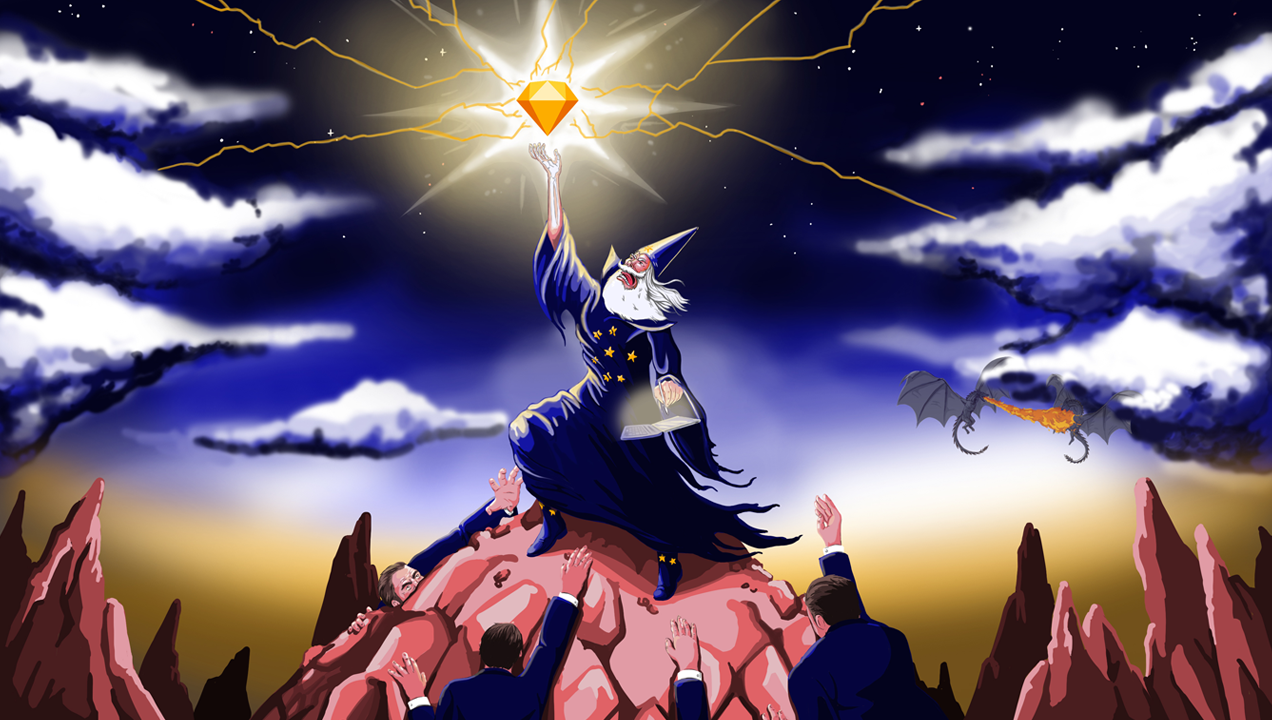5 Ways D&D Makes Me a Better UX Designer
You are sat around a boardroom table, surrounded by your coworkers. On the opposite side of the table sits your client. The room is dark and the glow of the projector threatens to drag you into a deep unforgiving sleep. Roll a d20… It’s a 1!
Your eyes close as you are softly swept away to the warm embrace of the land of sleep. Suddenly something or someone calls your name and you are dragged back to reality, greeted by the room staring at you as your client asks you again,
“What do you think?”
Luckily real life isn’t controlled by the cruel roll of a die, but there is something about the hugely popular tabletop game Dungeons and Dragons (D&D) that can really change the way you tackle your day to day work life.

All image credit: Jamie Blackett
I have only recently fallen into the world of D&D. As a gamer I’ve always been aware of the game but never felt brave enough to learn all the rules or find enough willing people to form a group. However, this year I have played in a couple of different groups and become well versed in all the joys and pains of a great D&D session.
Over the past few months I’ve started to realise how all these roleplaying skills I had learnt in order to run a successful game of D&D have become an integral part of my work life.
Here are the 5 ways that D&D has made me a better UX Designer.
- Improvisation
- Planning for every potential outcome
- Roleplaying personas
- Telling a story with your senses
- Learning from your mistakes
Improvisation
The cornerstone of tabletop roleplaying games. Learning how to improvise has meant I can quickly adapt when a project doesn’t go the way I was expecting. Could an impromptu meeting with a client turn out they wanted something completely different, or feedback on a project drastically change the original idea? Improvisation teaches the skills needed to adapt and keep a cool head in these unexpected difficult situations, like when my recent D&D group decided to derail my 3 hour action packed campaign by playing as pacifists.
Planning for every potential outcome
Part of being a good Dungeon Master is about preparing the adventure for your party in advance. What locations will they visit, who will they meet, how many goblins will there be in the dungeon? Much like preparing for a big workshop, you plan the activities that you will run and the outputs you’d like from them. D&D also teaches you how to prepare for the unforeseen. As your players can do anything they damn well please, it’s important to prepare for those scenarios. If they don’t choose to help the town by ridding the local mine of those troublesome goblins, where else can they go? This works in the real world too, if a workshop activity doesn’t quite work out the way you hoped what else do you have up your sleeve?
Roleplaying personas
Part of being a good UX designer is walking in your users shoes. It can be hard to build empathy for someone who’s opinion doesn’t match your own. D&D is a great way to learn how to pretend to be someone else, what decisions would my character make in this situation? Particularly if your character has a set of flaws, they may not always agree with how you’d like to tackle a situation. Our office D&D group has a Dragonborn Fighter whose flaw is he won’t pay attention to any plans and will actively choose to instead do the opposite, this doesn’t work well for team play but creates hilarious situations. Also, if you choose to be a Dungeon Master you’ll need to roleplay potentially hundreds of unique characters.
In the UX space your product users may not always choose to use your product in the way you want them to, and being able to preempt that and keep their actions in mind as you design is a fundamental skill.
Part of being a good UX designer is walking in your users shoes. It can be hard to build empathy for someone who’s opinion doesn’t match your own.
Telling a story with your senses
Creating campaigns for my regular group meant I had to quickly learn how to be more descriptive. D&D is a game run 95% in your imagination (and 5% frantic dice rolling) so I have to clearly communicate to my group where they were and what people or monsters are there. To do that effectively, requires not only descriptions of what a place looks like, but also what it smells like and what they can hear. As a UX designer, it’s important to be more descriptive about your designs, communication is an important factor to convey the reasoning behind your design decisions and any extra tools you have to explain ‘why’ the better.
Learning from your mistakes
This is a big one for designers in general, it’s okay to not get it right every time. It’s important to have time to reflect after a project is done and learn from what worked and what didn’t as part of a collaborative process. I make sure to quiz my D&D group after every session to understand if they enjoyed it. If they haven’t, I know going into my plan for the next session to change things up and hopefully get a little bit better.
If there is an opportunity for you to try Dungeons and Dragons I hope you say yes. There’s more to it than elves and trolls, you may even learn something.
